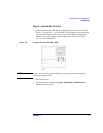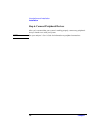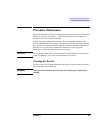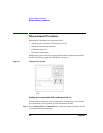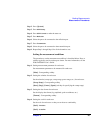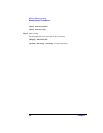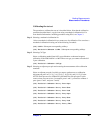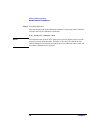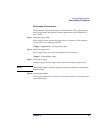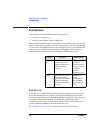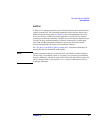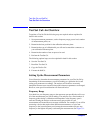
Chapter 2 25
Making Measurements
Measurement Procedures
Calibrating the test set
The procedure to calibrate the test set is described below. Note that the calibration
procedure described here is a typical one using a mechanical calibration kit. For
more detailed information, including procedures using ECal, see Chapter 3.
Step 1. Selecting a mechanical calibration kit
Select a mechanical calibration kit you want to use for calibration. You can select a
mechanical calibration kit using one of the following 2 methods.
[Cal] - Cal Kit - Subsequent corresponding softkeys
[Cal] - Test Set Cal - Calibration - Cal Kit - Subsequent corresponding softkeys
Step 2. Selecting Cal Type
Select a calibration method from full 2-port calibration or enhanced response
calibration. If the E5061A/62A is of the T/R test set type you cannot select the full
2-port calibration.
[Cal] - Test Set Cal - Calibration - Cal Type
Step 3. Selecting an adjacent port pair and executing the measurement of the calibration
standards
Select an adjacent port pair for which you want to perform test set calibration.
Adjacent port pairs are: [1, 2], [3, 4], [5, 6], [7, 8], [9, 10], and [11, 12]. For the
87075C multi-port test set, calibration is performed for each port pair. For this
reason, when you want to use, for example, ports 1 and 5, you need to calibrate 4
ports (ports 1 and 2, and ports 5 and 6).
[Cal] - Test Set Cal - Calibration - Port x-y - Port x Open
[Cal]
- Test Set Cal - Calibration - Port x-y - Port x Short
[Cal]
- Test Set Cal - Calibration - Port x-y - Port x Load
[Cal]
- Test Set Cal - Calibration - Port x-y - Port y Open
[Cal]
- Test Set Cal - Calibration - Port x-y - Port y Short
[Cal]
- Test Set Cal - Calibration - Port x-y - Port y Load
[Cal]
- Test Set Cal - Calibration - Port x-y - Port x-y Thru



